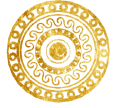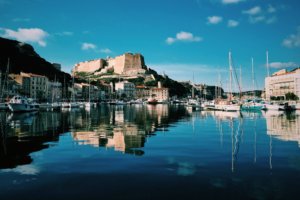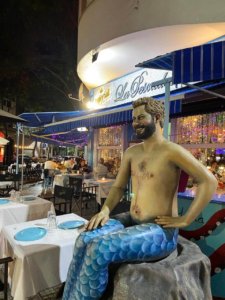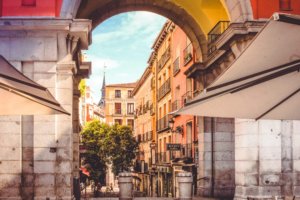Lausanne in Spring
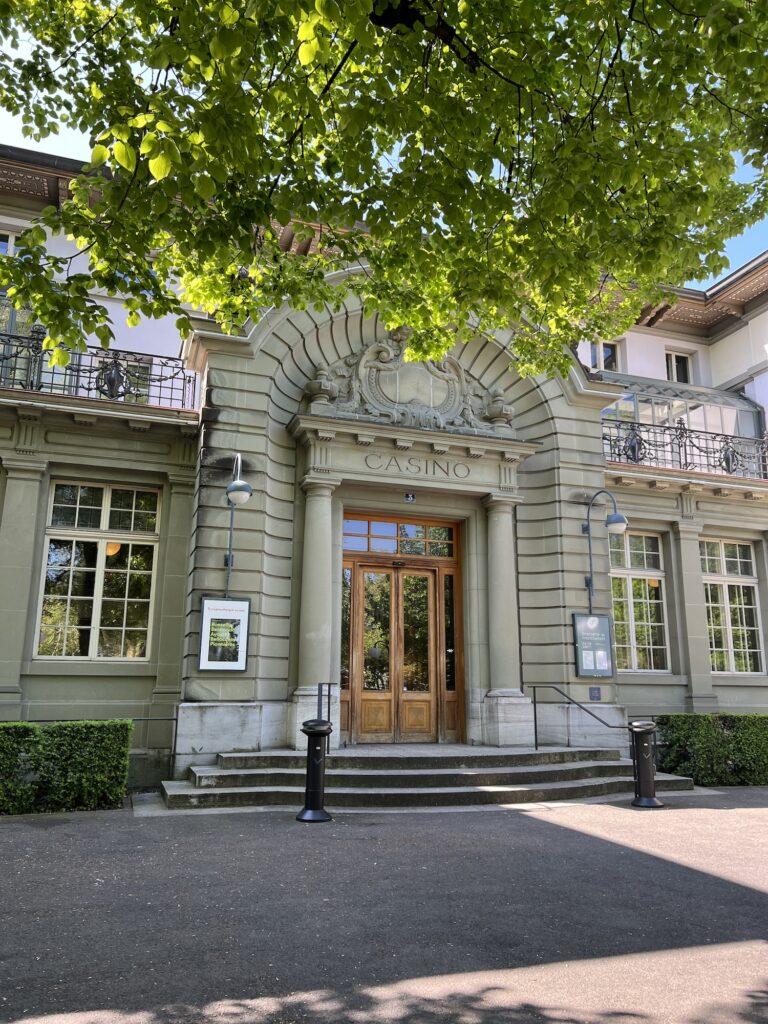
What pops into your mind when you think of Lausanne? The shining beauty of Lake Geneva? The bustling downtown area? Delicious cuisine?
Lausanne and adjacent Montreux have that, and more.
This French-speaking region rocks a contemporary vibe, boasting “new style” museum spaces while retaining its historic roots. Visitors will find fun shopping, delicious restaurants, and sumptuous pastry spots close at hand.
City of Contrasts
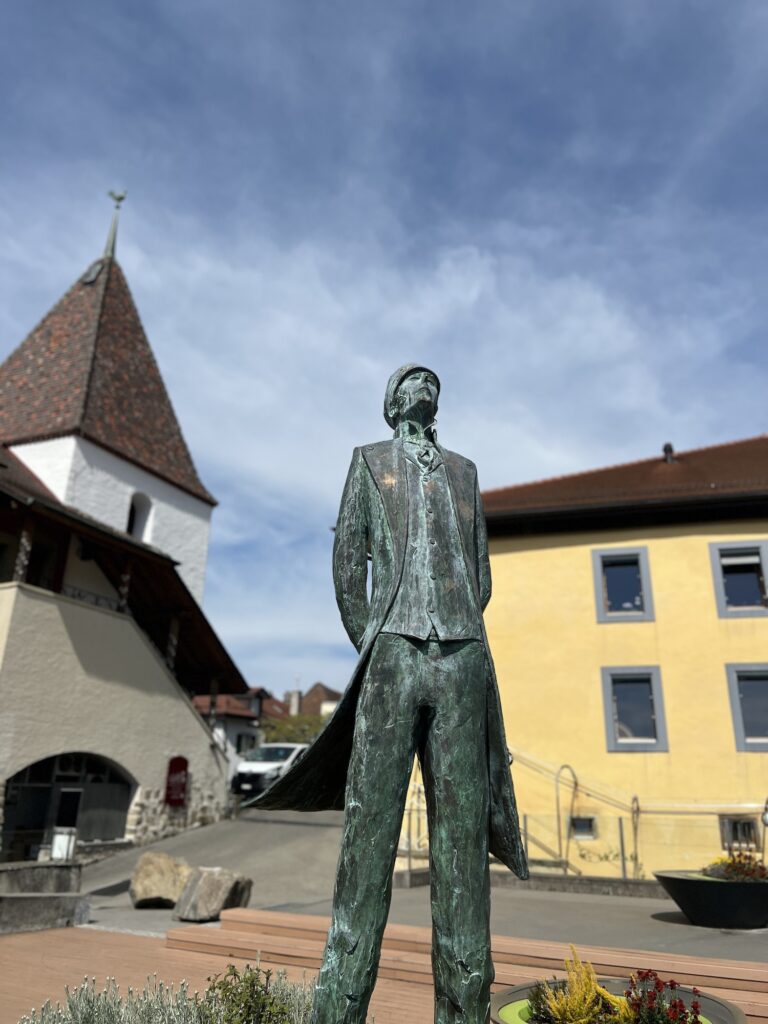
Lausanne shines as a lovely city of contrasts. Downtown, you will see ornate 18th century Belle Epoch edifices cheek by jowl with contemporary office buildings and shops. You can dine in sleek Michelin-rated restaurants or enjoy an old-fashioned “tractor competition” in Lavaux, the wine-growing region.
Lausanne History
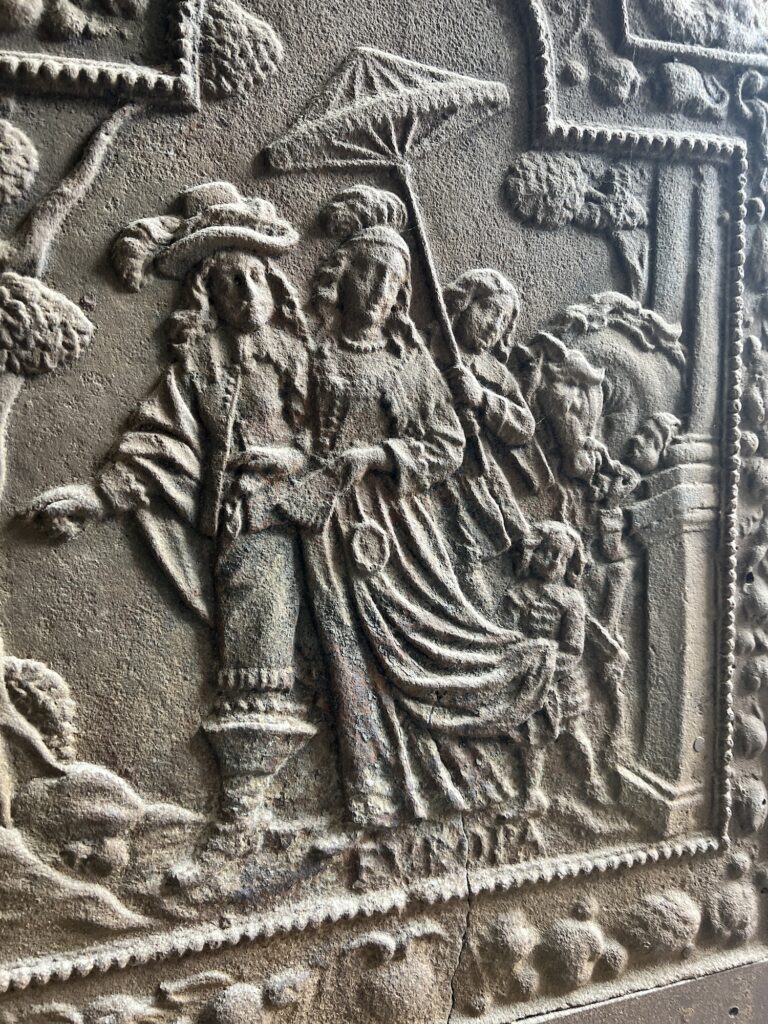
The Romans established a trading colony here in the first century BC. Soldiers would pass through the region on their way to defend their empire.
By the Middle Ages, Lausanne’s cathedral served as an important pilgrimage stop on the Way of St. James, a famed Christian pilgrimage route.
To best get a sense of how this city is structured, begin your tour with the Lausanne Cathedral. Then meander along the shop-lined, winding streets below. The cobbled walkways leading down to the Place du la Palud can be steep, so be certain to come equipped with the right shoes.
Lausanne: The Cathedral
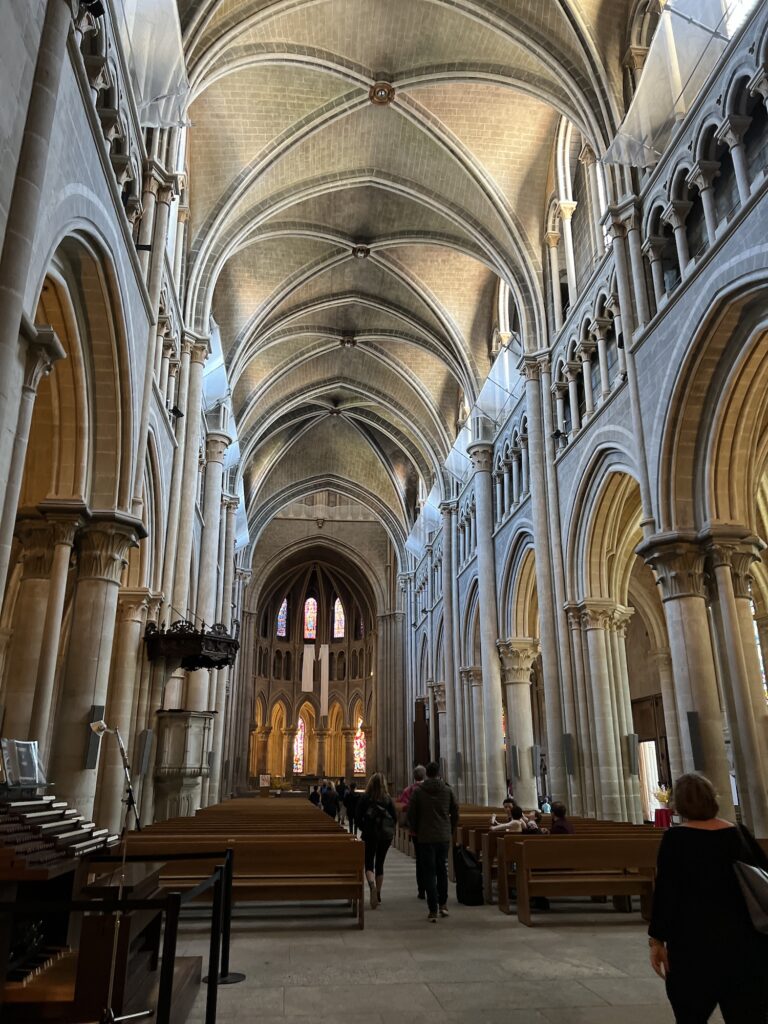
Lausanne rises in terraces, especially in the downtown area near the Cathedral.
The Lausanne Cathedral remains the largest Gothic Church in Switzerland, well worth a walk around its enormous girth. Inside, visitors will find 13th century sculptures, stained glass windows, and an impressive pipe organ still used for concerts to this day.
You’ll want to check out the window displays of the enchanting boutiques lining the stone-paved streets as you descend the Cathedral. Your reward is a treat in one of the chocolate shops in the Place de la Palud.
Place de la Palud
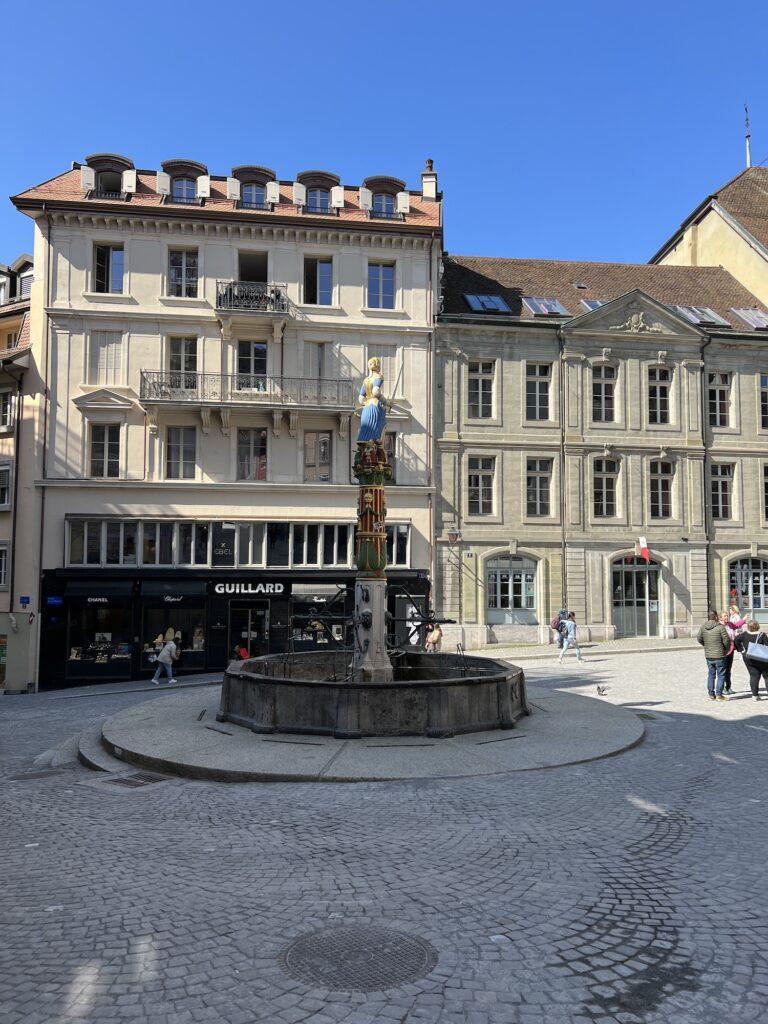
This bustling, sunny pedestrian-only area delights with its shops, cafes, and bubbling fountains.
You will enjoy strolling around these cobblestone streets, savoring the perfect cup of coffee, and listening to a strolling musician.
Foodies will rejoice in the Farmers’ market that takes place every Saturday, offering the freshest of vegetables, fruit, and cheeses from the mountains.
Tradition: The Cathedral Watchtower
Perhaps you recall fairy tales in which a town crier goes around the village, calling “all is well.”
Lausanne holds a similar tradition.
Each night between 10p.m and 2a.m, a watchman (more recently a watchwoman) cries out the hour from the belfry of the Cathedral.
Brunch in Lausanne - Brasserie de Montbenon
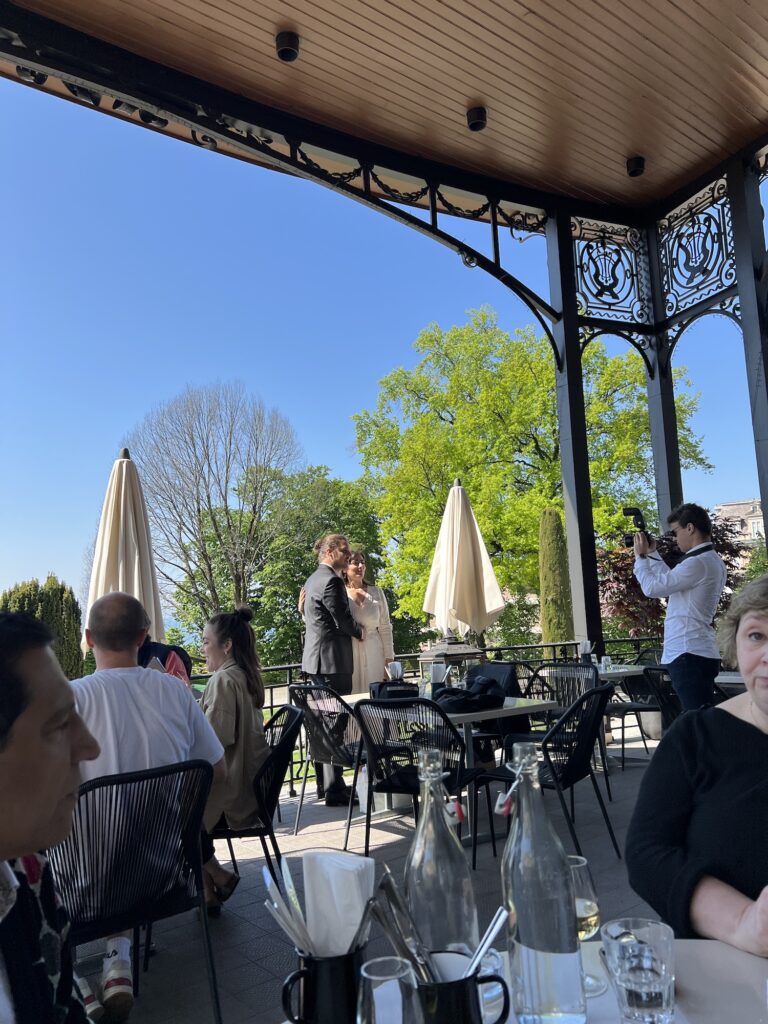
The view is of the green park and Lake Geneva in the distance. A great place for a cocktail and some delicious cheese and meat.
Lunching in Lausanne
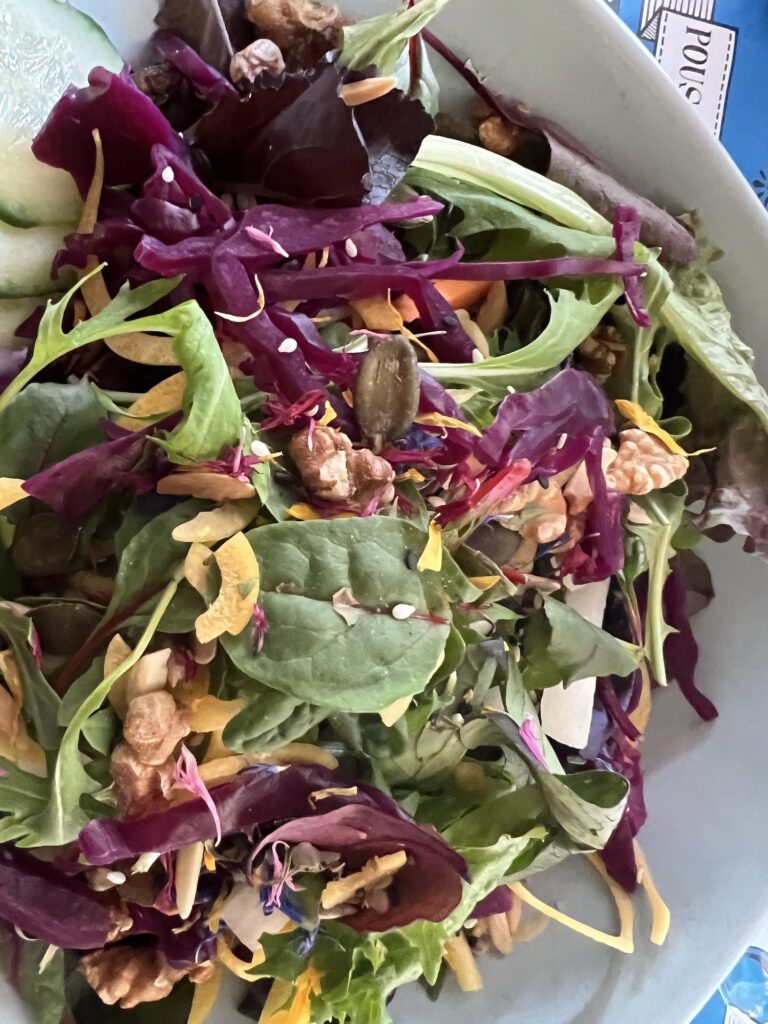
The Flon is the heart of Lausanne. At once ancient and modern, this area pulses with activity. Once a district of warehouses, it is now the trendiest area for restaurants, bars, clubs, cinemas, boutiques, and exhibition spaces.
You will find many restaurants to choose from, including the traditional restaurant Blue Lezard, featured in the “Taste my City” package. This packet of experiences helps travelers save money and see landmark attractions as curated by Lausanne locals.
The Blue Lezard restaurant offers traditional Lausanne cuisine, and lots of it. The friendly wait staff speaks English perfectly.
Berceau des Sens, 1* Michelin Restaurant at École Hôtelière de Lausanne (EHL)
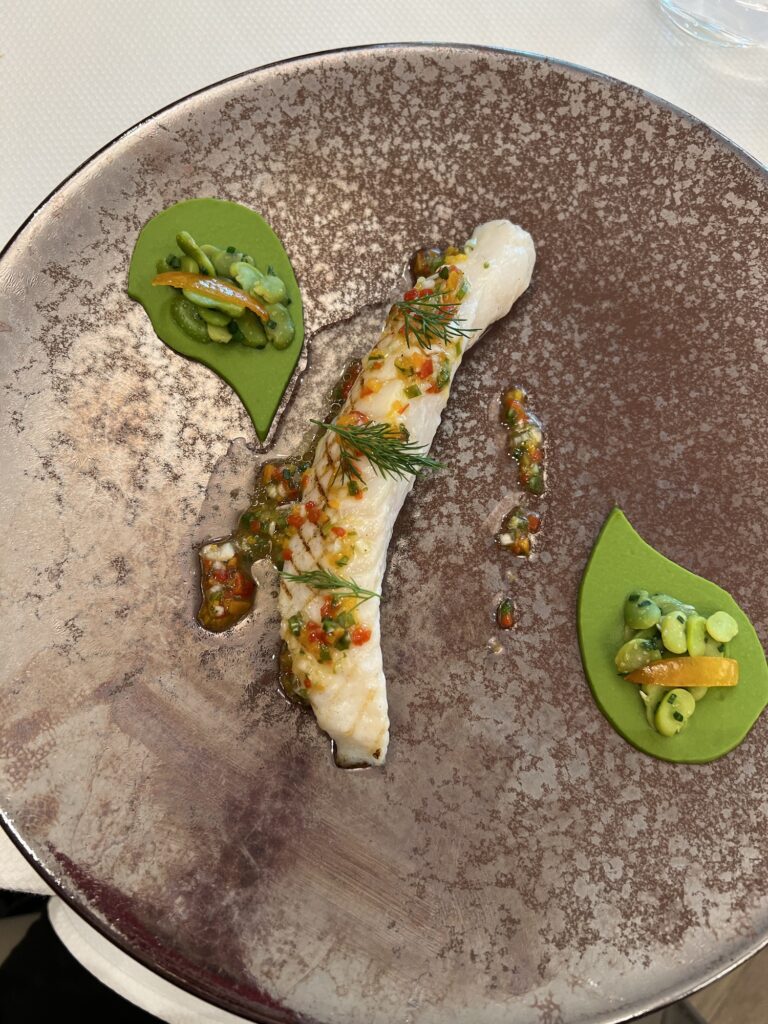
The Berceau des Sens, 1* Michelin is located in the École Hôtelière de Lausanne (EHL).
This is one of the first hotel schools in Europe. Students attend with the goal of running a top quality hotel in a management capacity.
That said, they must learn every task in a hotel such as cooking, serving, acting as a wine sommelier, and even housecleaning.
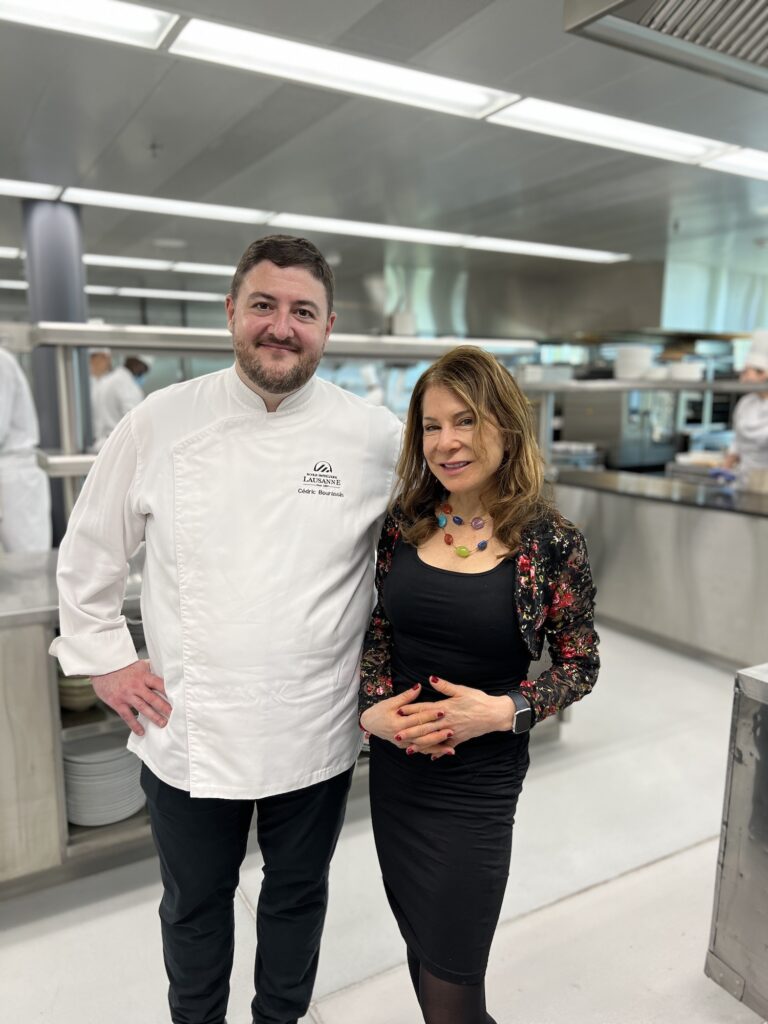
Above is the chef CÉDRIC BOURASSIN with Marisa D’Vari.
In addition to cooking the food, he must oversee a new student staff every two weeks.
Cupcakes at Royaume Melazic
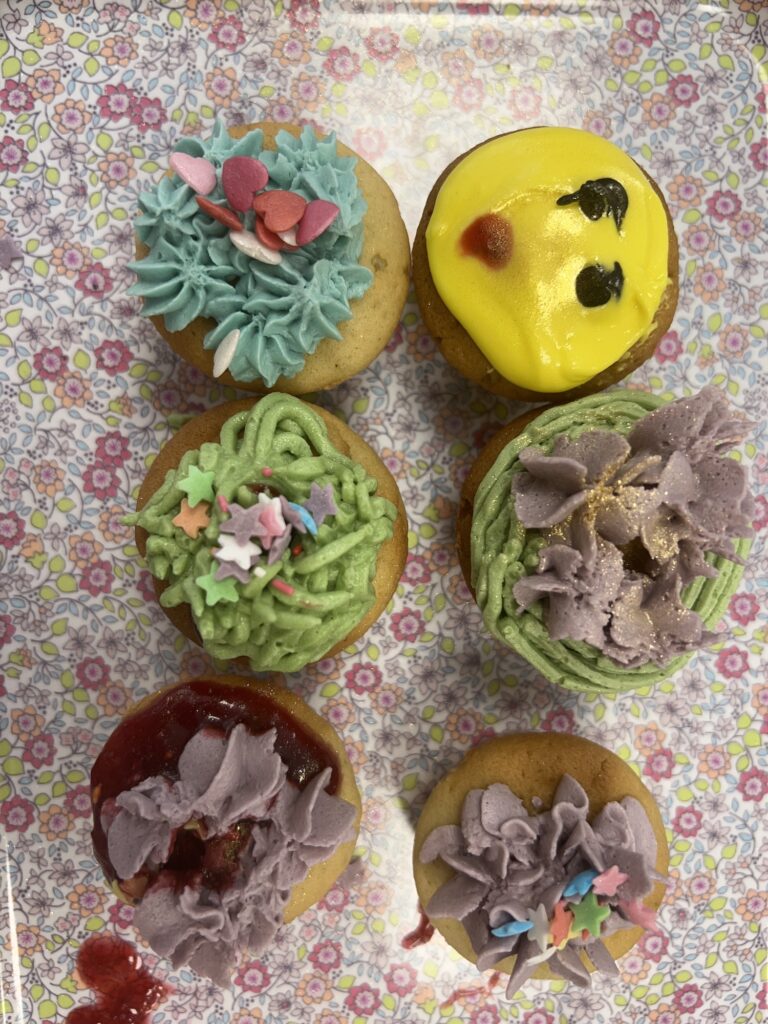
The team at Royaume Melazic cupcakes usually makes them look better than this – these were designed by amateurs for fun.
This was another another stop in the Taste my Swiss City tour
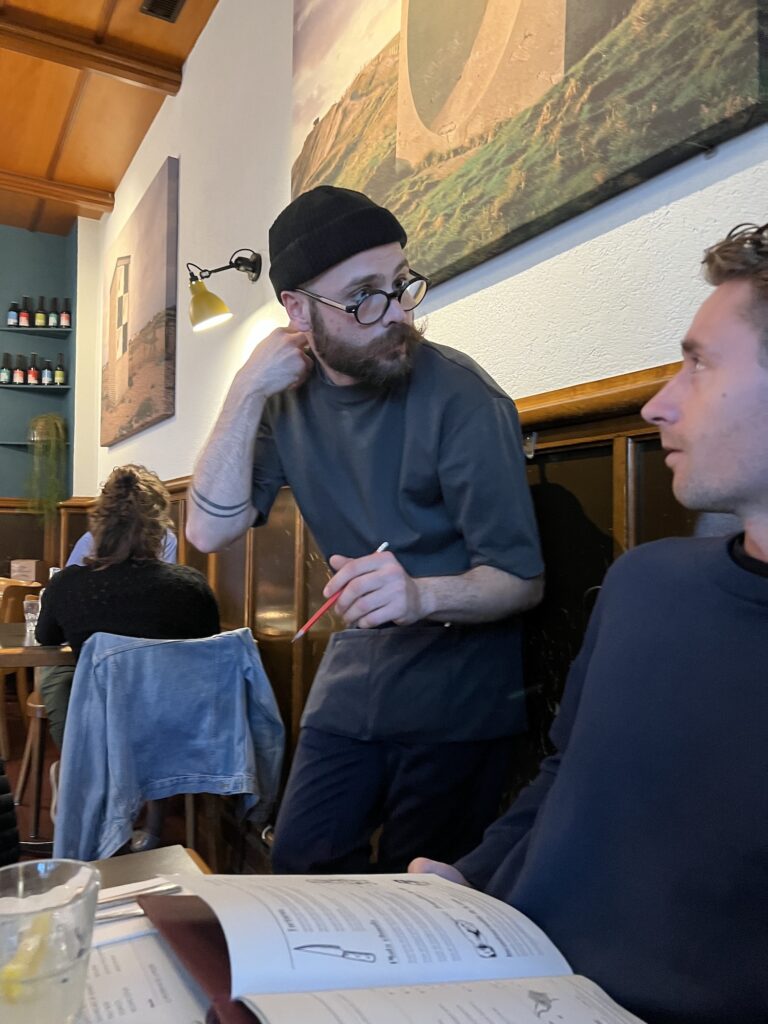
This is a very cool, “insider” restaurant marked by a relaxed décor, servers with topknots and tattoos, and FUN cuisine. Some may call it “fusion.” I couldn’t decide between salmon tartar or a shrimp dish, so I was able to order a “trio” containing these two items.
On this relatively warm April night, the outdoor terrace beckoned, but our reservation was for the restaurant’s interior.
The chefs and the servers pride themselves on the farm-to-market quality of their cuisine, and their unique spot in the Lausanne restaurant scene.
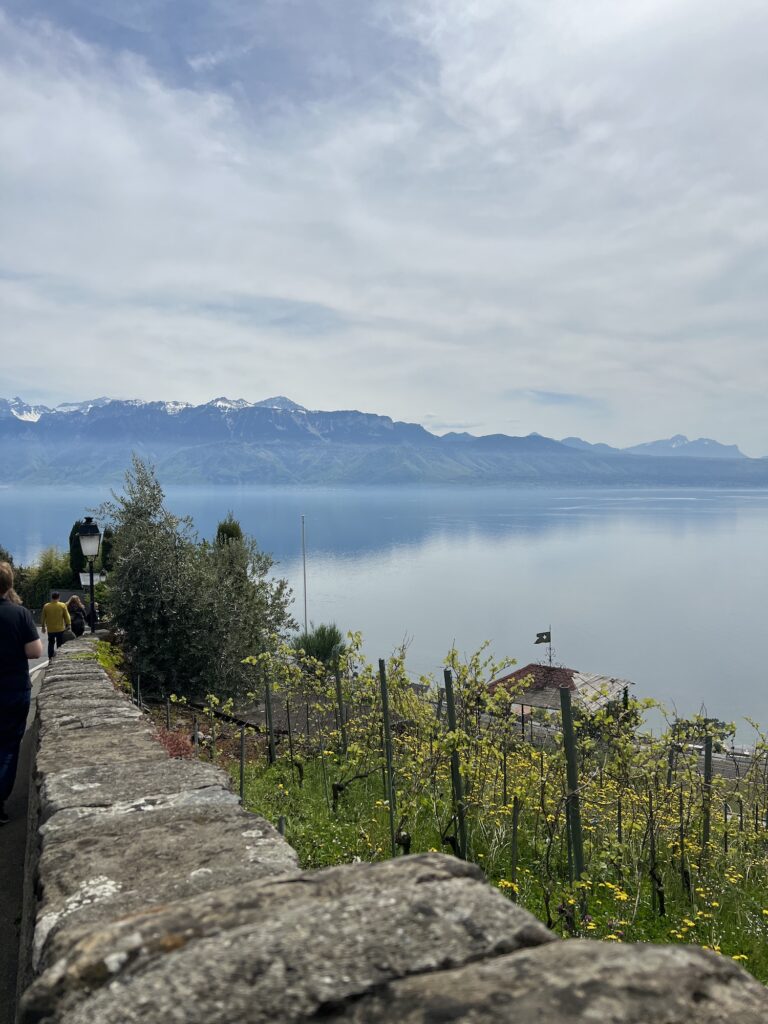
Lavaux: Switzerland’s Winegrowing Region
Wine from Switzerland enjoys fame for two key reasons: it is of excellent quality, and there is very little of it on the international market. It’s almost impossible to taste a Swiss wine outside of the country.
This is one reason why I treasured our visit to Lavaux, the country’s key winemaking region.
The second reason is that though I’ve been to virtually every wine-growing country in Europe, South America, and most of the USA, Lavaux offers the most breathtaking vineyard areas I’ve seen.
Why? Virtually every vineyard has a stunning view of shimmering Lake Geneva, and the Swiss Alps rising in the distance. When the sun is shining down, the vista is magical.
Sweetening the visit is Lavaux’s location, just about 45 minutes by train from the center of Lausanne.
Now a UNESCO World Heritage site (since 2007), this bucolic winegrowing region was first established by the ancient Romans.
Standing near the vineyards, I could almost visualize the soldiers climbing down from the alps towards the hilly region below. As early experts in viticulture, they must have been quite pleased to see how well the topography of Lavaux is well suited to the vine.
Vine terraces can be traced back to the 11th century, when Benedictine and Cistercian monasteries controlled the area.
Lavaux
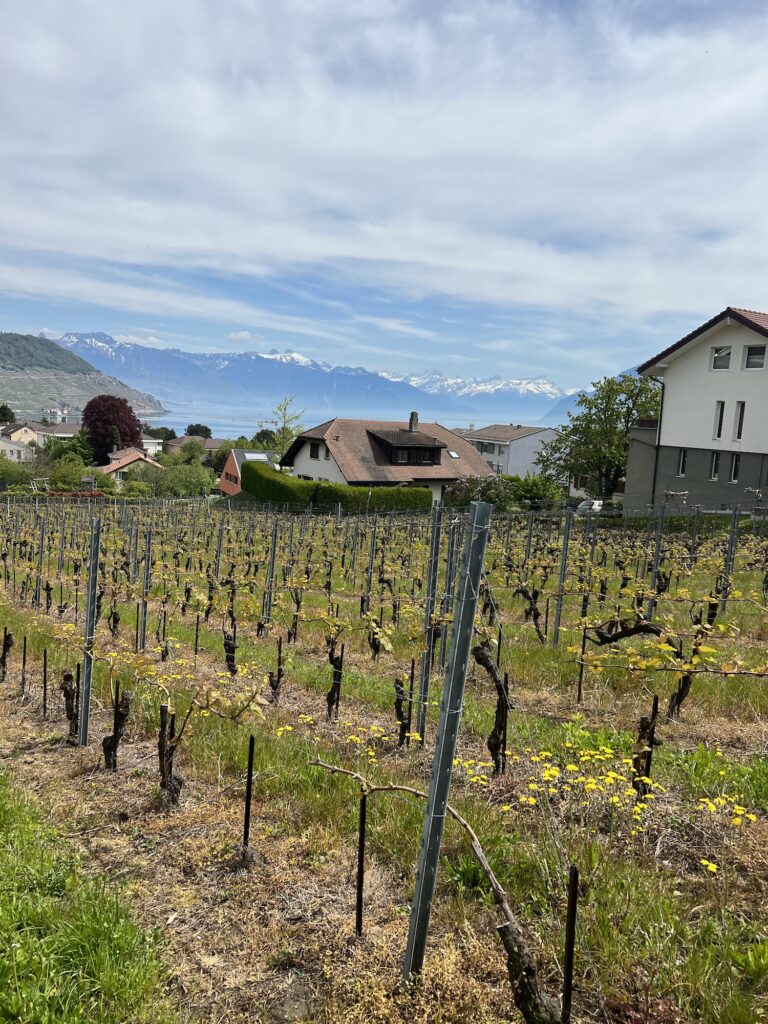
Stepping off the train at the Grandvaux stop, one finds oneself standing at the top of a steep hill overlooking vineyards. Lake Geneva and the towering Alps artistically arrange themselves for your pleasure in the background.
This historical wine-growing region stretches for over eighteen miles along the south-facing northern shores of Lake Geneva, considered the Swiss Riviera (sometimes called the Montreux Riviera).
Lavaux: Pastoral Wonderland
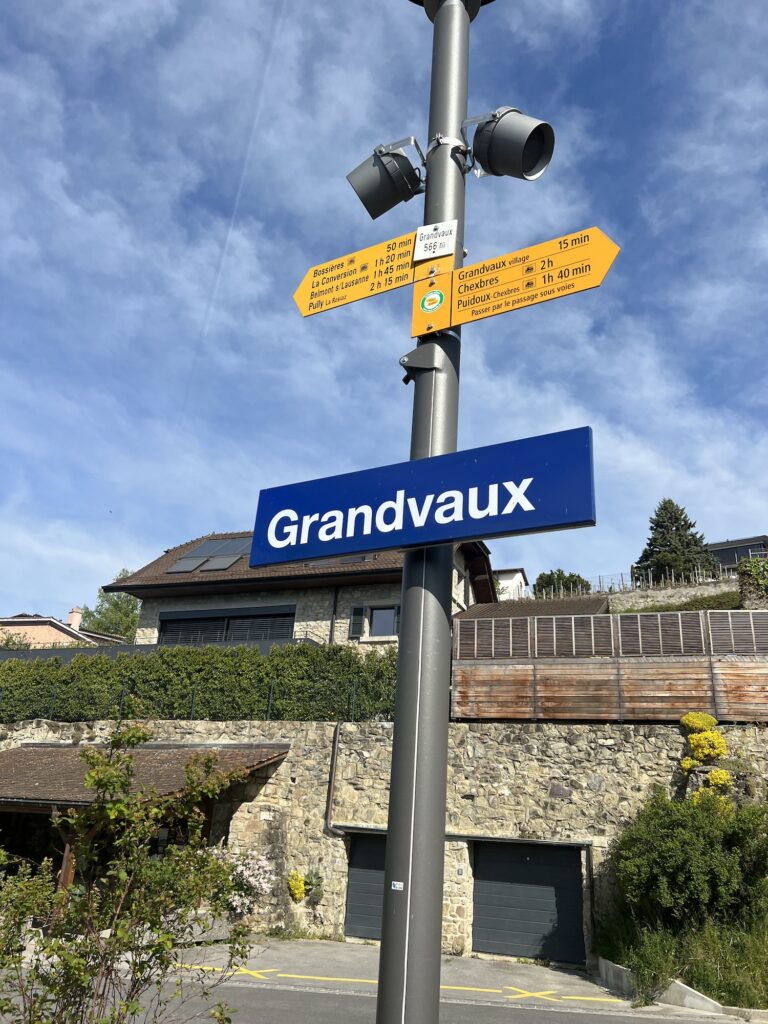
On this warm, sunny April day, Lavaux looks to be a pastoral wonderland. From this vista, it’s almost impossible to believe that Lavaux proper includes more than a dozen tiny villages, including the lakeside capital of Cully, site of the famous Cully jazz festival (created 1983).
Yet after walking for nearly a half hour through the meandering stone pathway leading to the Maison Lavaux, the only living entity encountered were a couple grafting vines with their dog serving as company.
Maison Lavaux
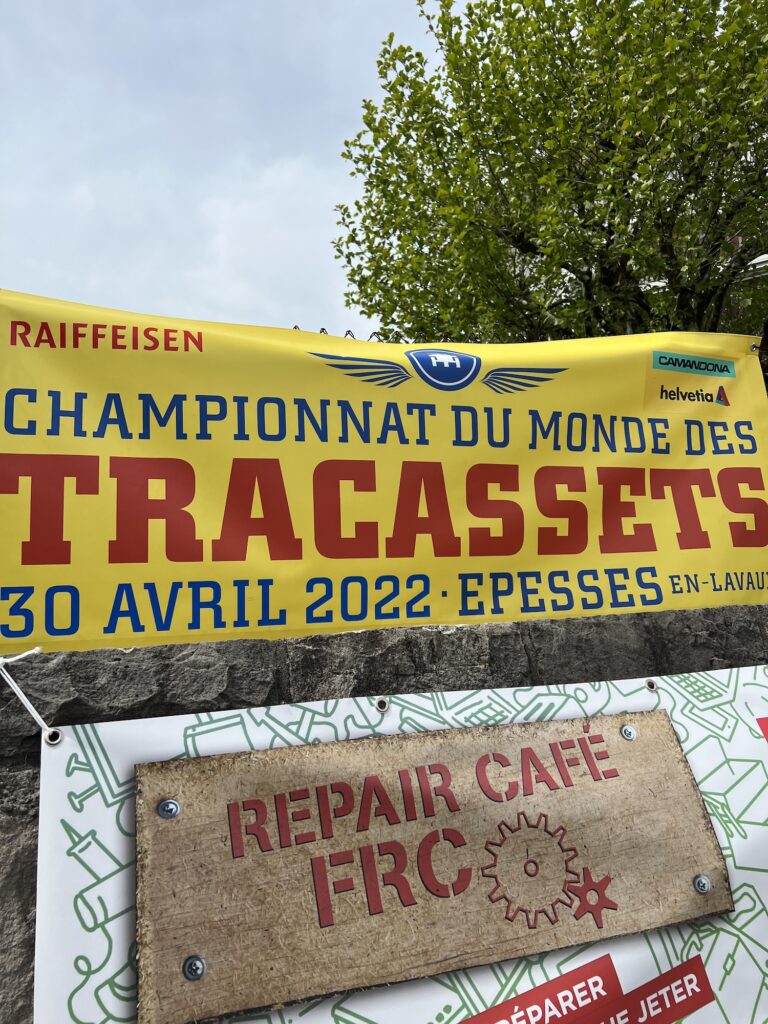
The Maison Lavaux thrives as an exhibition space, tracing the historical and cultural aspects of Lavaux. The exhibition space divides itself into several themes in three separate rooms. Information about the exhibit appears on signs, on pamphlets, and in an audio app that can be used with your smartphone.
The most interesting of the themes is a mural depicting the townspeople carrying on daily tasks (swimming in the lake, interacting with tourists).
One of these illustrations showcases the Championnat du Monde des Tracassets (small tractor competition), that under normal circumstances, occurs every two years. Because of COVID related closures, they delayed this competition for nearly four years.
Learning about this, we returned the next day to catch the 22nd year of this event live.
Lunch with the Winemaking Joly Family
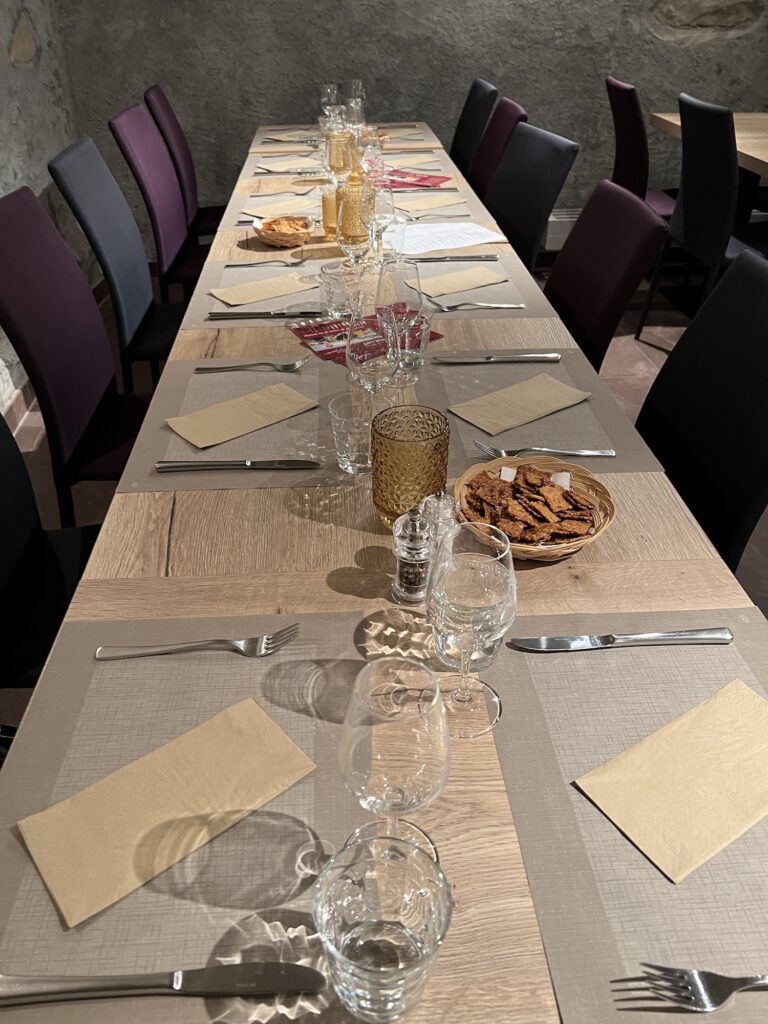
Jacques and Aurelia Joly are a friendly French-speaking couple who appear to enjoy their work as vignerons and ambassadors to the Lavaux region. They own a beautiful home in the center of the town, with their vineyards some distance away.
The couple have divided their responsibilities so that Madame Joly, with her education in the culinary arts, prepares meals for guests and covers everything related to hospitality. Monsieur Joly devotes himself to the vineyards and also to the winemaking as the family has their cellar within their home.
Madame Joly explaining that they offer a variety of experiences to guests. For example, during spring, summer and fall, their terrace is open for wine tasting. Guests can also plan for a multi-course meal paired with their wines.
Guests craving an authentic experience in Lavaux can rent an apartment on their property.
Once they’ve introduced themselves, Madame Joly explained that they offer a variety of experiences to guests. For example, during spring, summer and fall, their terrace is open for wine tasting. Guests can also plan for a multi-course meal paired with their wines.
The couple also have a separate apartment for guests who crave an authentic experience in Lavaux.
The Joly Lunch and Tasting
Monsieur Joly led a master class style tasting, pouring some of the many wines in his portfolio, and then explaining both the grapes used, the laws regulating them, and the process of production.
After the tasting, Mrs. Joly presented a delicious three course lunch produced with local products.
Domaine Potterat
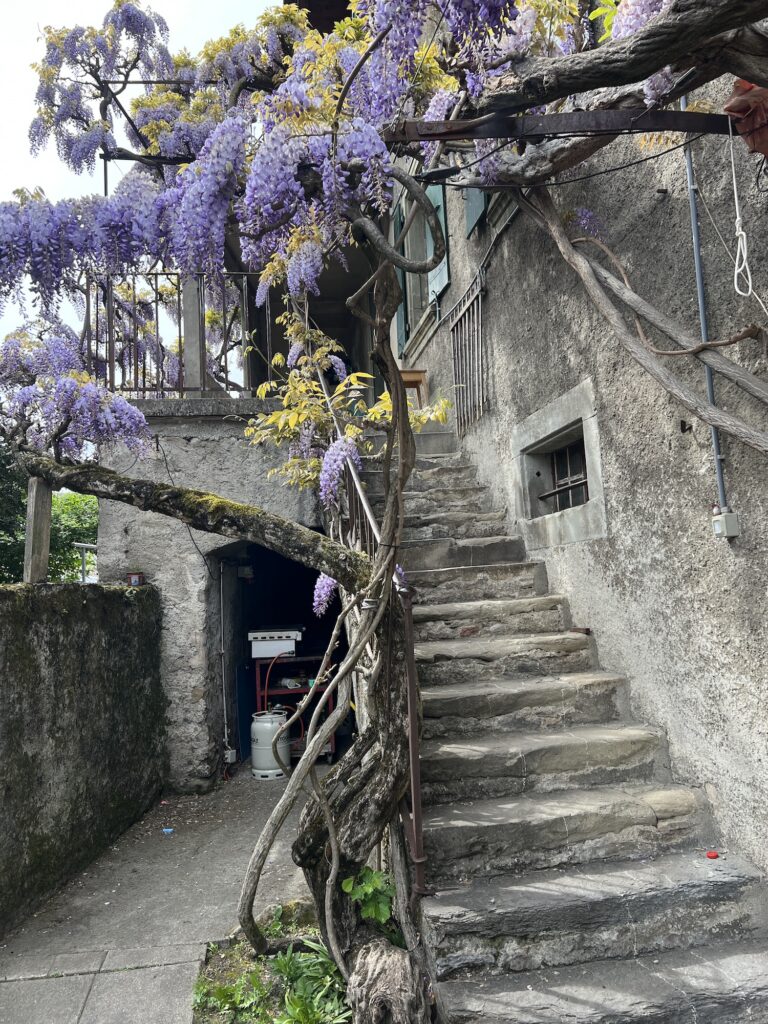
Strolling through the sunlit vineyards to Domaine Potterat might have taken more than a half-hour. Yet time passed quickly on this striking spring day in which every flower opened to share its delicious fragrance.
M. Potterat greeted us at the entrance of his 600 year old winery, where his family had been making wine for generations.
Sitting on an outdoor table filled with the perfume of thousands of newly opened spring flowers, we tasted his magical wines.
Whites included the native Chasselas but we also tasted Sauvignon Blanc, Pinot Noir, and Syrah.
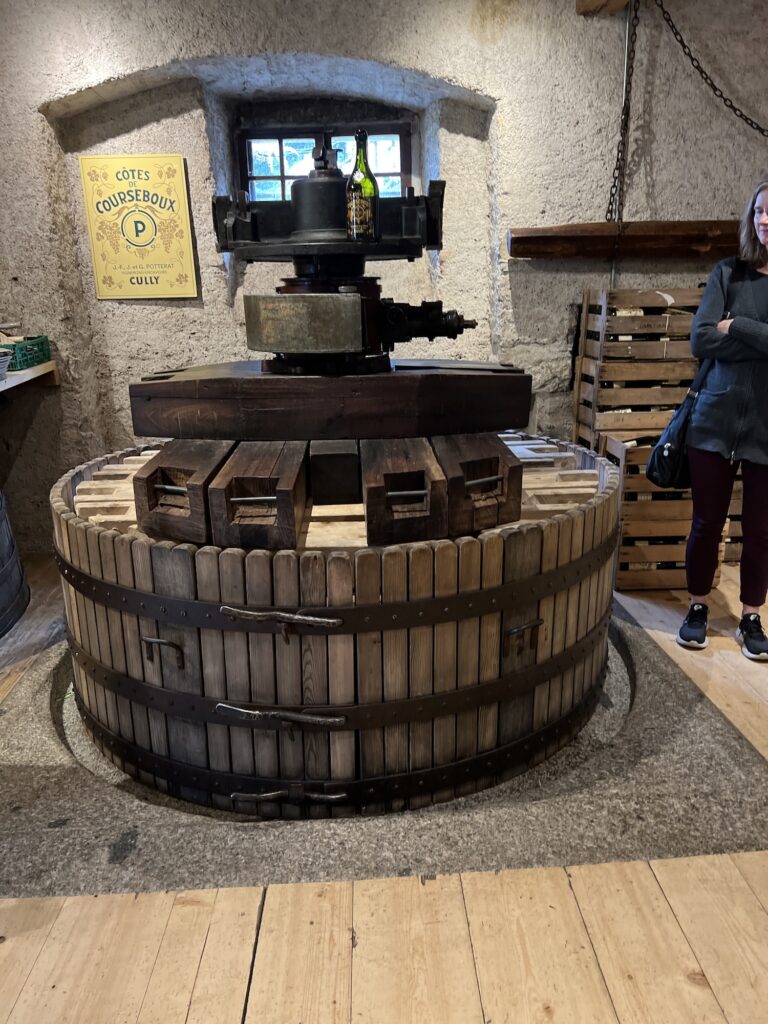
Aside from the rare wines, the winery itself is a delight to visit. Much of its construction date to the 14th century and even Roman times, with the ancient press still in use.
As a special treat, M. Potterat led us downstairs, below the winery, for a tasting of a 2105 Chesselas.
Experts consider the Chesselas grape excellent for the production of an easy drinking, simple wine, but M. Potterat proved that when grown and vinified by the right winemaker the wine can improve with age.
Läderach Chocolate Workshop
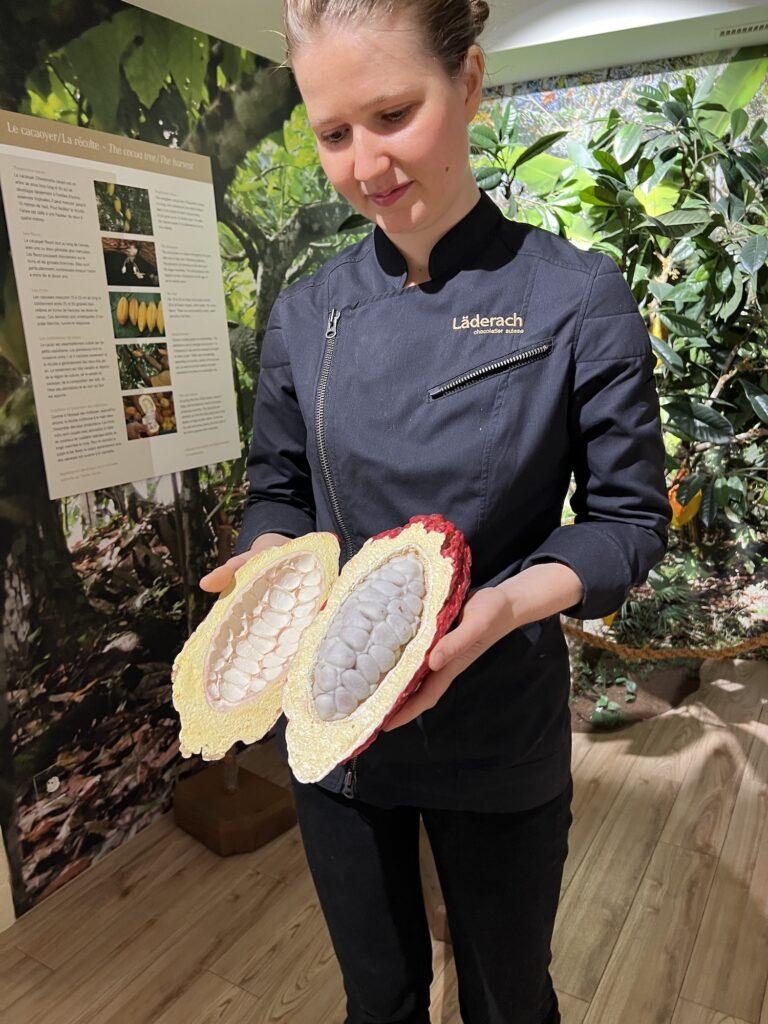
Willy Wonka and the Chocolate Factory remain one of my favorite childhood movies, so you can imagine my excitement of attending a chocolate workshop.
Frankly, I wasn’t sure what to expect.
Yet our instructor made it an educational and enjoyable experience.
The Läderach chocolate experience begins when you enter the shop. Madame, our instructor for the day, showed us an area within the demonstration and chocolate making room where we can wash our hands, then sanitize our phones.
Next, she showed us the finished display of the style of chocolate bar they expected us to replicate.
We had complete freedom in its design, the ingredients used with the chocolate (like almonds), and the type of chocolate (milk chocolate, dark chocolate, and white chocolate) used in the bar.
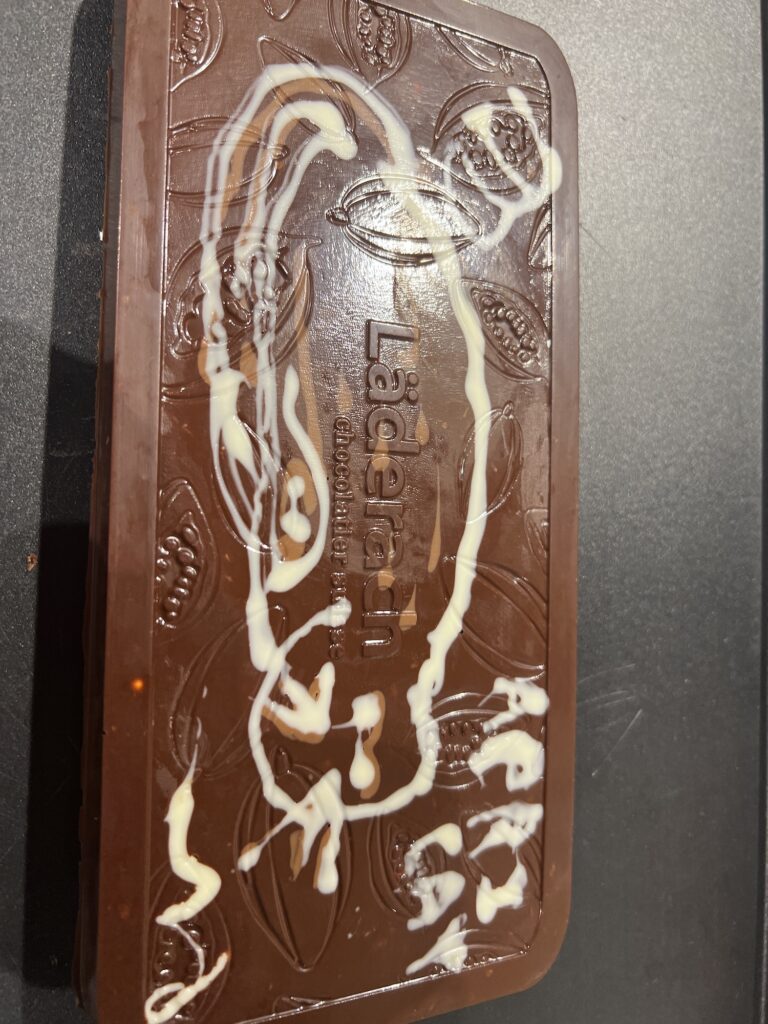
Madame explained how we would create an attractive design on the front of the bar, via the use of a rectangular-shaped mold like a jello mold.
The Tracing Paper
The idea is to:
1. Consider a design (it can be a word or picture)
2. Use the tracing paper to draw it
3. Put the tracing paper beneath the transparent mold.
Once this step is completed, the fun part begins.
We use the three different colors of chocolate (light brown, dark brown, white) to sketch the design with cone-shaped wax paper.
We left our chocolate design to harden.
Then we filled the rectangular mold with the chocolate of our choice. I chose white.
While the liquid chocolate bar hardens, Madame gave us a brief introduction into chocolate production, beginning with the beans and how they are collected and fermented.
The more interesting aspect is that in Mexico, chocolate had historically taken on a mystical character. Though not a narcotic, the native people used chocolate in their magical ceremonies.
Curiously, chocolate makers in other cocoa growing regions (Jakarta, other Asian countries) didn’t make the association between chocolate and the supernatural.
Experience Fondue at Pinte Besson
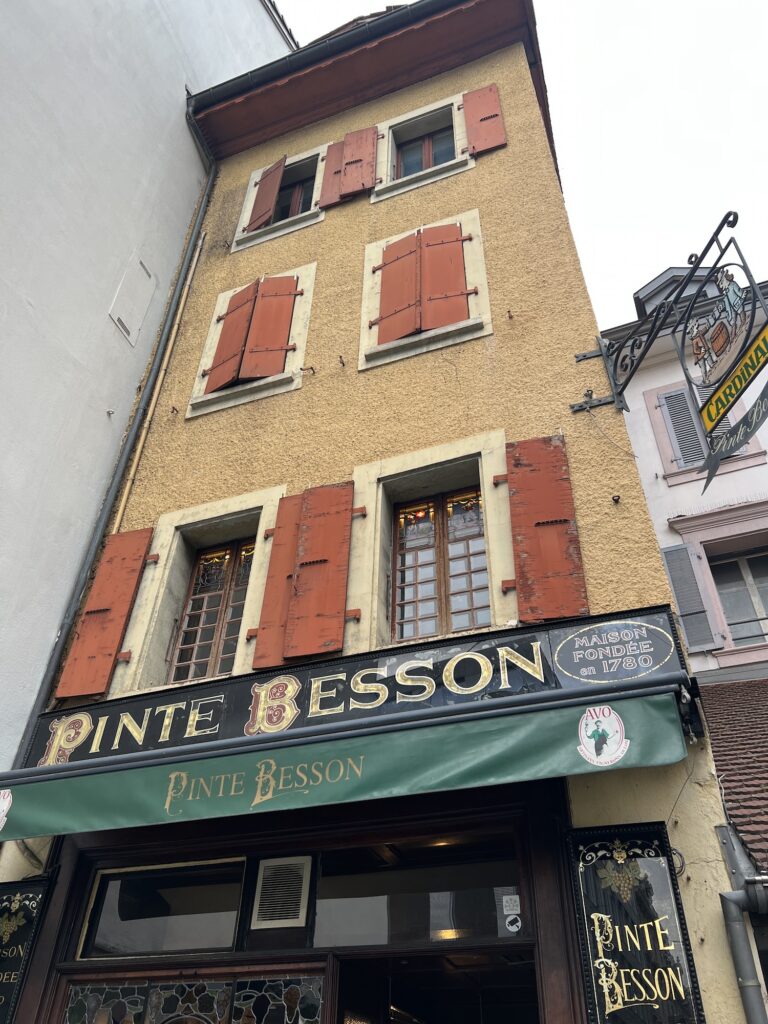
Travelers whisper that this is the oldest restaurant in Lausanne. Pinte Besson
It is named after the “pint, a measure which varies according to the regions but disappeared with the advent of the metric system (1795).
I enjoyed my dinner visit here with friends. Scattered around the room were couples enjoying the romantic vibe and groups of friends. The owners describe the menu as “traditional.” In keeping with the theme I ordered a cheese fondue with cognac and mushrooms.
Delicious!
Eat-Me Restaurant
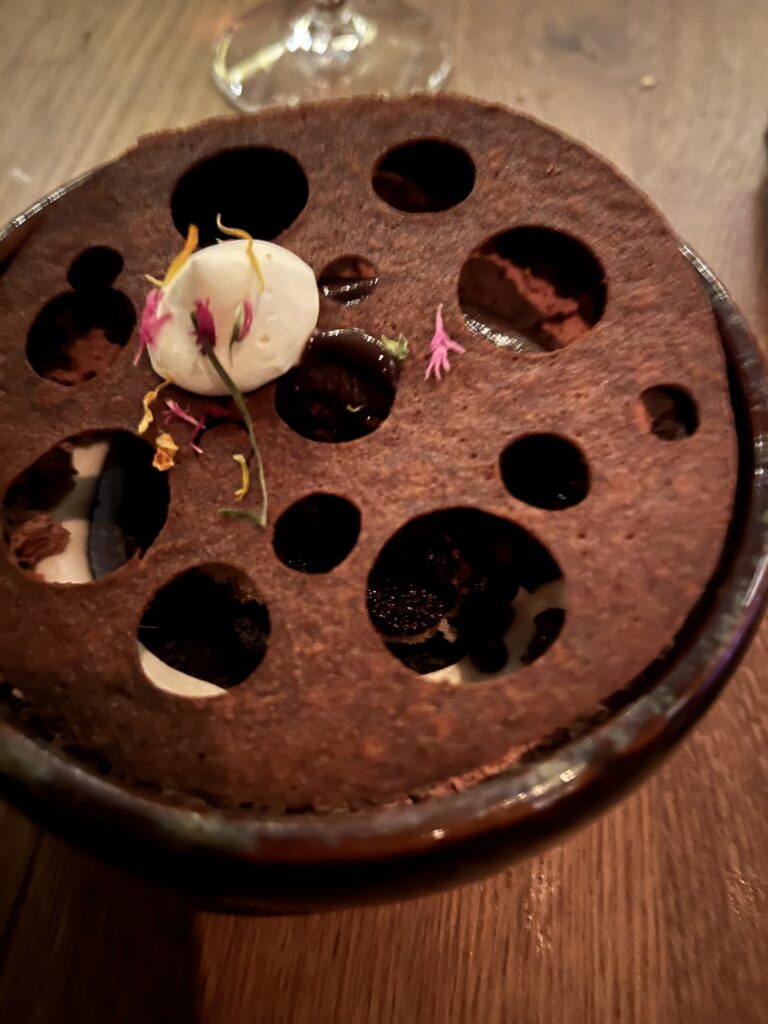
Though I’ve enjoyed the many delicious meals throughout Switzerland, some of them literally fit for a king (in former palaces, now luxury hotels) one of my favorite dining experiences was had in Eat-Me.
Perhaps it’s the trendy vibe that seemed so familiar to my Los Angeles rots and current habitat in Manhattan. But this restaurant is stunning in terms of architecture, and a place for major people watching.
During our visit, large tables dominated. It seemed a place to go for celebrations among friends or family. But couples were to be seen as well sipping exotic cocktails.
Our group of nine enjoyed a long table near the see-thru kitchen. Our dapper waiter, dressed in an elegant suit, explained the “small plate” concept of the restaurant.
In short, guests would share a series of small plates as they came from the kitchen. We enjoyed roughly seven dishes, including dessert comprising burrata cheese, scallops, pasta, and various meat dishes.
The cuisine was creatively plated, tasted farm fresh.
If I lived in Lausanne, I’d be a regular.
The Olympic Museum
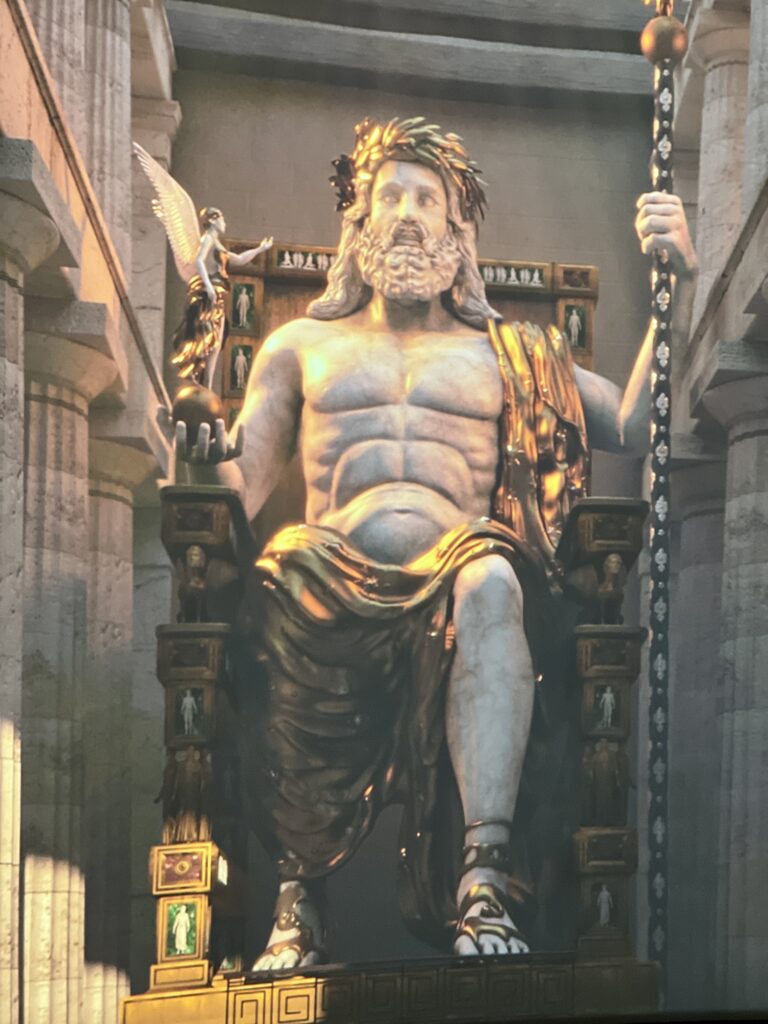
The Olympic Museum houses both permanent and temporary exhibits, offering over 10,000 artifacts. Enter the museum and a display of the Olympics as it existed in ancient Greece will greet you. The signage (in both French and English) explains that the candidates for the games must be from the noble families.
The museum was founded on June 23rd of 1993, with the goal of tracing the origins of the Olympics from Ancient Greece to the present. Covering three entire floors, visitors will learn about the history of the games in a variety of media.T
Platform 10
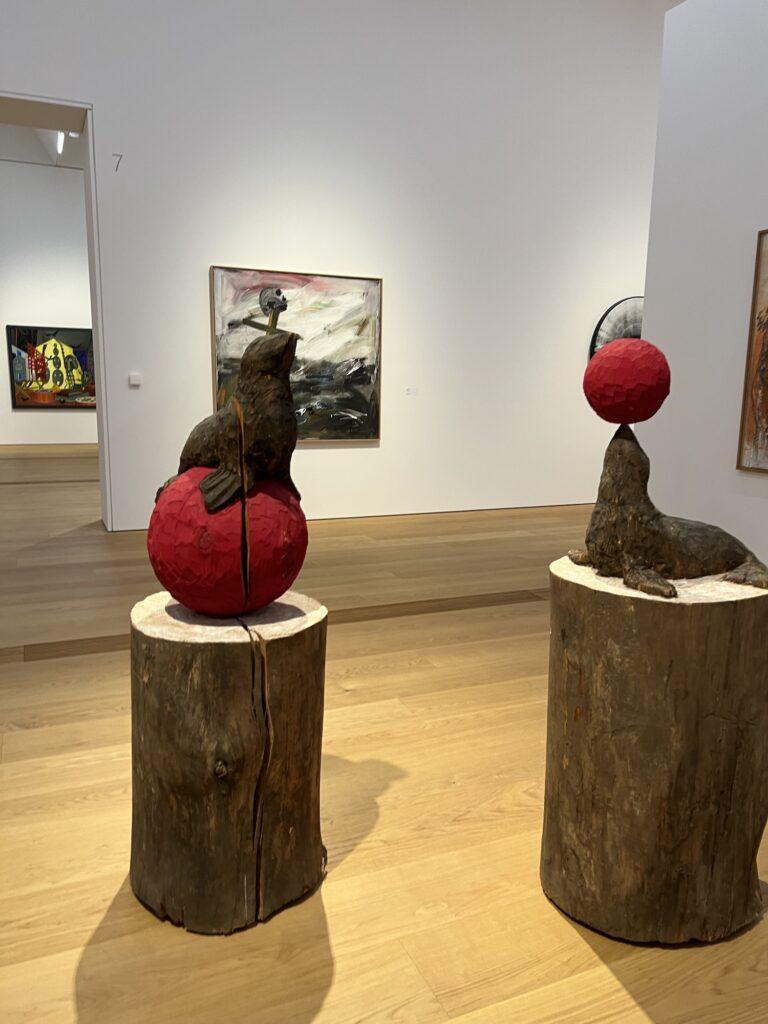
Platform 10 is more than a museum. A series of permanent and temporary exhibition spaces housed in separate buildings, one can describe it as a cultural platform within the city..
Montreux Jazz Festival @ The Fairmont Montreux Palace Hotel
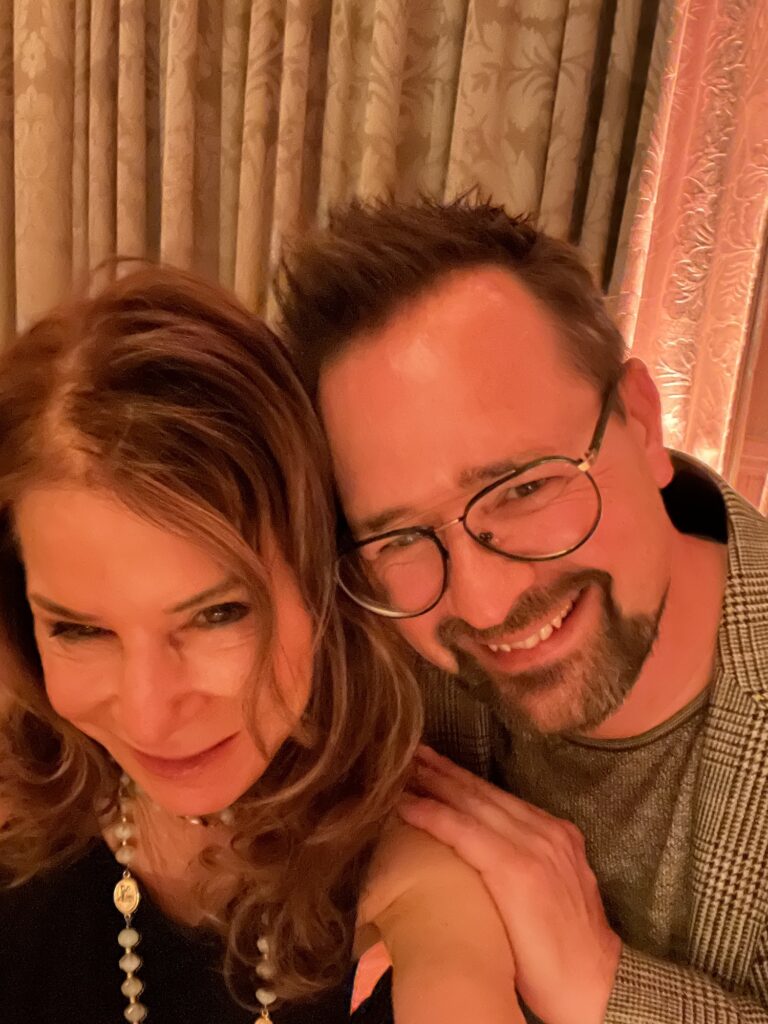
The Montreux Jazz Festival was created on 18 June 1967, founded in large part by Claude Nobs, a jazz-loving executive in the tourism bureau.
Having spent time in New York, Mr. Nobs thought launching a jazz festival in Montreux would be a great way to put the region on the map.
I heard this story at the historic Fairmont Montreux Palace hotel from Mathieu Jaton, once Mr. Nobs assistant and now the festival’s CEO.
With his charisma and dynamic way of speaking, Mr. Jaton described the very humble origins of the Montreux Jazz Festival, which relied more on Mr. Nobs charm and love of music than cash to hire the Jazz greats.
In one story, he describes how Claude Nobs enticed Aretha Franklin with Swiss chocolate instead of her usual fee.
The festival has changed over the decades, with some guests paying top dollar for seats, while others enjoy the free concerts by talented unknowns.
The Fairmont Montreux Place Hotel
Created in 1881 the hotel retains its Old World, Belle Epoque charm. Musicians stay here during the jazz festival, with many musicians, novelists, and others choosing to live in the hotel. Long-term guests included Vladimir Nabokov.
The picture below is the Fairmont Montreux Palace Hotel Ballroom
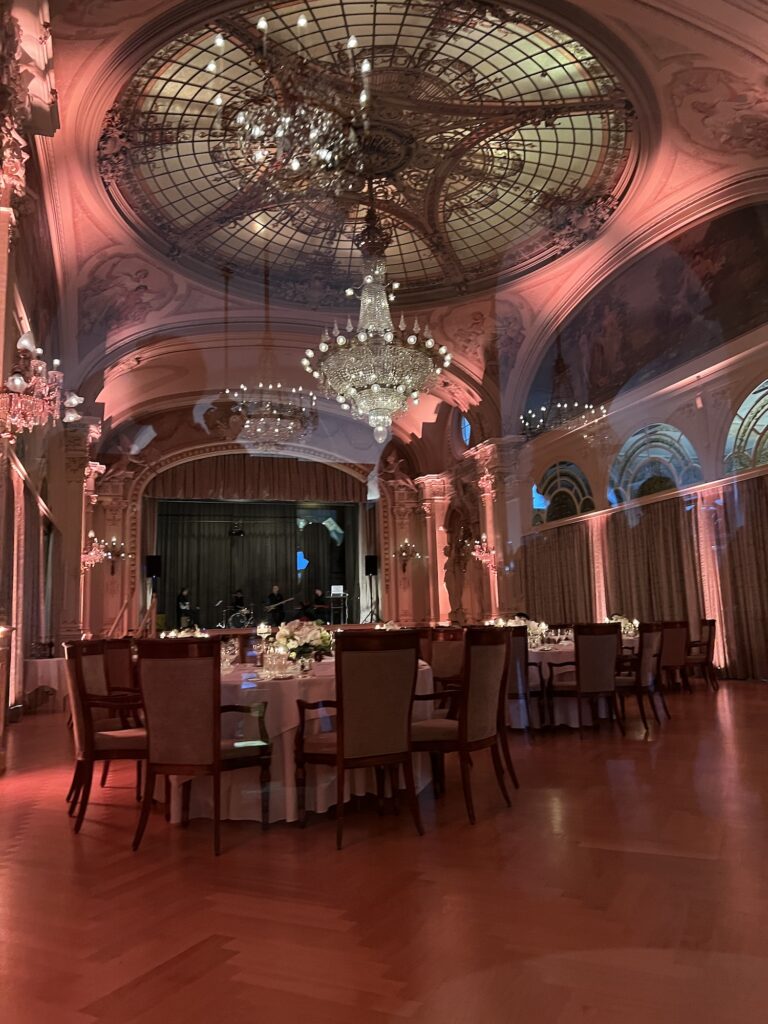
Switzerland Glacier Express - Excellence Class
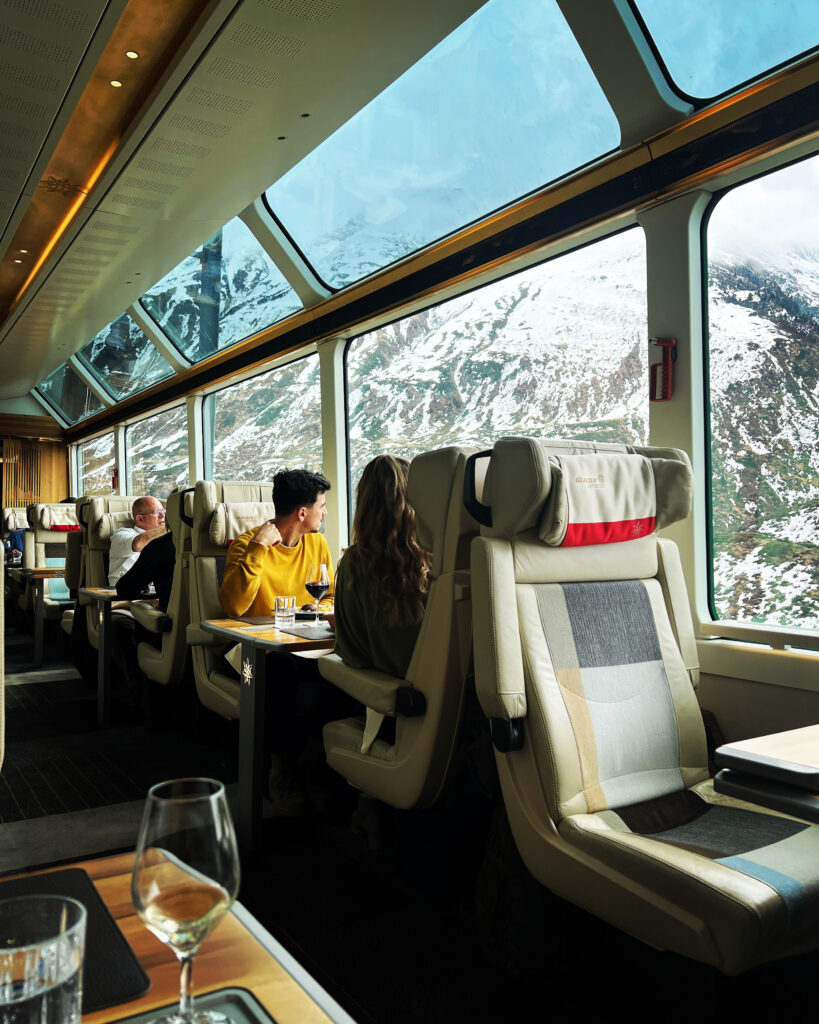
The novel and film Murder on the Orient Express always intrigued me.
I wondered what it would be like to travel on a first-class train. And in the 1940s, the period in which the author set the novel people dressed fashionably too.
The experience was incredible. We boarded in the Swiss village of Chur. Max, our captain, met us outside the Excellence class train car and escorted us and our luggage on board ,
From that point on, he poured an assortment of different wines and Champagne to match our many courses. Each seat had headphones and an entertainment device where guests could hear more about the region.
Final Thoughts About my Lausanne Experience
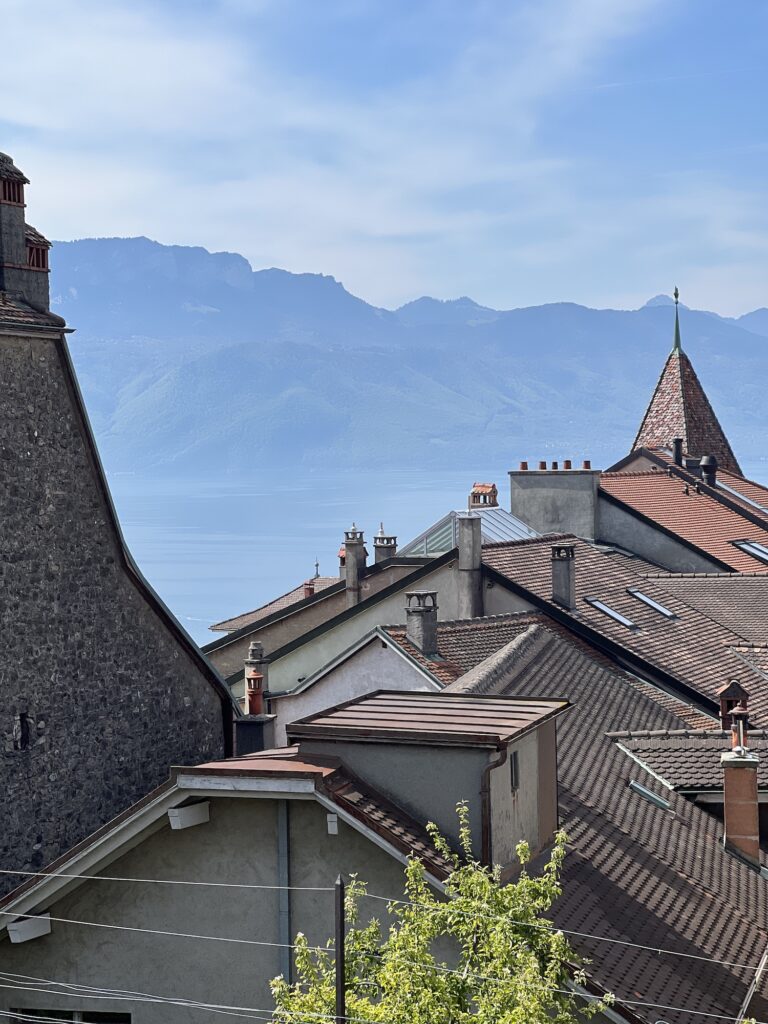
Most everyone in the world has heard of the Swiss Alps and the beauty of Lake Geneva.
We’ve heard of the fine Swiss watches.
Yet it took a near week-long visit to Lausanne to discover its true magic.
Magic is not a word normally used with travel. Yet the surprise is discovering that the picture-perfect postcard image of Lausanne is close to reality.
Here are some reasons.
1. Easy On/Off Transportation
As a child in Los Angeles, I’d been fascinated by a Disneyland ride called the people-mover. Adults from cities with mass-transportation likely noted it was like a modern day subway, but for an LA kid in a car-oriented city, it seemed so cool.
Lausanne re-awakened that “cool” factor with its network of interconnecting local Metro, train system, and even boats which are available to tourists under a multi-day pass.
Our hotel, the 4-star Movenpick facing Lake Geneva, was less than 3 minutes from the metro. The metro connected to trains that could take us to virtually any region within Switzerland. With a single pass, it was easy and even faster to go from the Movenpick Hotel to a restaurant in the Flon district than a taxi.
2. A Hundred Picture Perfect Views a Minute
No exaggeration here. Every Lausanne district vibrates with personality. And it’s fun to snap the different eras in its history, represented by its modern, medieval, and Belle Epoque architecture.
Yet despite snapping hundreds of pictures, my favorite photos all include Lake Geneva with the Alps in the background.
I’ve appreciated this incredible view several times a day, beginning with breakfast at both the Movenpick and Beau Riveage hotels.
Then, during the day when walking toward the Metro or train.
Usually at lunch, too, when dining at an outdoor café. The list is endless.
3. The kindness of the Lausanne People
Genteel people with good manners exist in every city. But in Lausanne there are simply more of them.
Lausanne has so much to offer, from the affordable pleasures of witnessing a small tractor competition near the sun-soaked vineyards to the delights of a grand hotel like the Beau-Rivage.
Swiss Travel System Pass
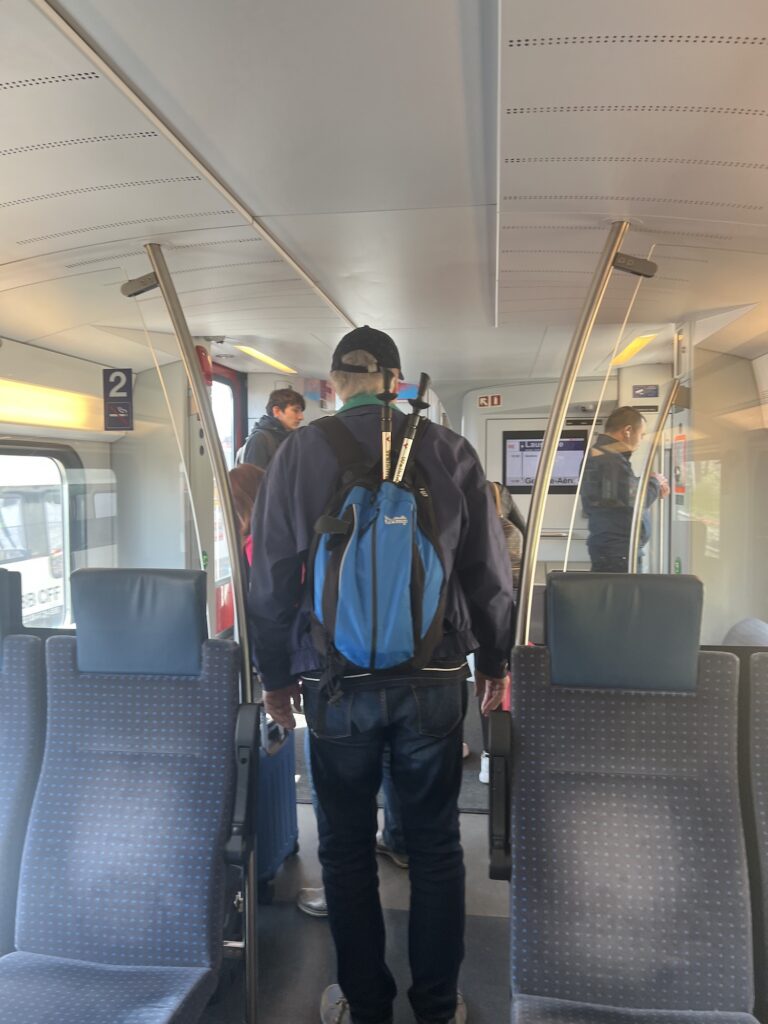
As a longtime travel journalist, I’ve made my way across Europe in trains, planes, taxis, busses, private cars, and even something called a “Bla Bla” car in France and Italy.
Yet nothing can compare to the ease, comfort, and affordability of the Swiss Travel Pass.
Tourists can purchase this pass in advance of their trip in specific units of days (3 and 5 being the most common).
Until I experienced its ease of use, I wouldn’t have thought of obtaining one. Likely I would just have paid the normal train fare from the airport to Lausanne, then would have taken taxis around the city, as is my custom.
Once purchased, this pass allows tourists unlimited travel (1st class compartment) on all trains, metro, busses, and even boats in more than 90 cities and towns.
The Swiss travel pass even includes mountain excursions: Rigi, Schilthorn, Stanserhorn and Stoos.
Free admission to more than 500 museums are also included.
To learn more information about it, click on this link.
